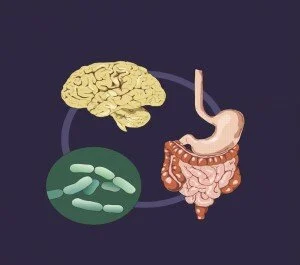In Wisconsin, the United States’ top cheese-producing state, it follows that the microbe responsible should finally earn accolades. Here is a profile of the illustrious microbe:
Name: Lactococcus lactis
Honors and Awards: A bill to recognize L. lactis as Wisconsin’s state microbe was passed by the Assembly on April 15, 2010 and awaits approval from the Senate.
Work Experience:
-
Cheese-making—Uses enzymes to convert lactose (milk sugar) into lactic acid. The acid lowers the milk’s pH, causing it to curdle; the curds are then removed to make cheese and whey. Used especially in the production of Cheddar, Colby, cottage cheese, cream cheese, Camembert, Roquefort, and Brie; also in curdled dairy products such as buttermilk and sour cream.
-
Vaccine delivery—Generates proteins from pathogens on the microbe’s cell surface and, when administered, induces an immune response to the protein and provides immunity to the pathogen. Primarily administered via mucosal pathways, especially to provide immunity to Streptococcus pyogenes, which causes strep throat.1 Oral administration2 is also being developed, which may help with HIV immunization3, gluten sensitivity4, and prevention of other respiratory diseases.
Other Popular Microbes:
-
Saccharomyces cerevisiae (yeast), crucial for making bread, beer, and wine; might California consider nominating this microbe?
-
Corynebacterium glutamicum, assists in the production of the sweetener aspartame; a potential Florida state microbe?
-
Clostridium thermocellum, useful for the creation of ethanol and natural wood glue; perhaps a state microbe for Iowa?
1 Mannam, P., Jones, K., & Geller, B. (2004). Mucosal Vaccine Made from Live, Recombinant Lactococcus lactis Protects Mice against Pharyngeal Infection with Streptococcus pyogenes Infection and Immunity, 72 (6), 3444-3450 DOI: 10.1128/IAI.72.6.3444-3450.2004
2 Villena, J., Medina, M., Raya, R., & Alvarez, S. (2008). Oral immunization with recombinant Lactococcus lactis confers protection against respiratory pneumococcal infection Canadian Journal of Microbiology, 54 (10), 845-853 DOI: 10.1139/W08-077
3 Xin, K. (2003). Immunogenicity and protective efficacy of orally administered recombinant Lactococcus lactis expressing surface-bound HIV Env Blood, 102 (1), 223-228 DOI: 10.1182/blood-2003-01-0110
4 Huibregtse, I., Marietta, E., Rashtak, S., Koning, F., Rottiers, P., David, C., van Deventer, S., & Murray, J. (2009). Induction of Antigen-Specific Tolerance by Oral Administration of Lactococcus lactis Delivered Immunodominant DQ8-Restricted Gliadin Peptide in Sensitized Nonobese Diabetic Ab Dq8 Transgenic Mice The Journal of Immunology, 183 (4), 2390-2396 DOI: 10.4049/jimmunol.0802891
 The research, led by Professor Mark Lyte from Texas Tech University Health Sciences Center,1 proposes that through a unifying process of microbial endocrinology, neurochemical-producing probiotics could act as a delivery mechanism for neuroactive compounds that could improve a host’s gastrointestinal and psychological health.
The research, led by Professor Mark Lyte from Texas Tech University Health Sciences Center,1 proposes that through a unifying process of microbial endocrinology, neurochemical-producing probiotics could act as a delivery mechanism for neuroactive compounds that could improve a host’s gastrointestinal and psychological health.